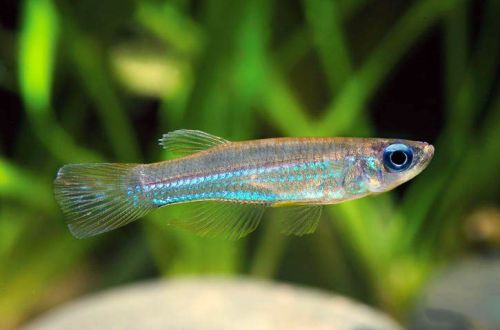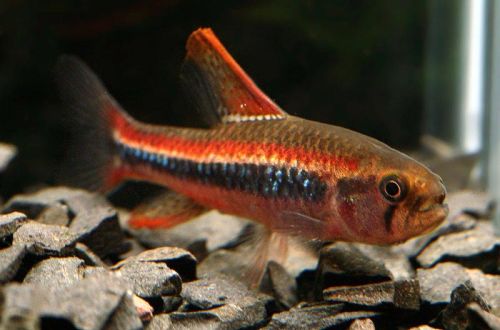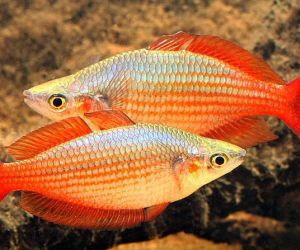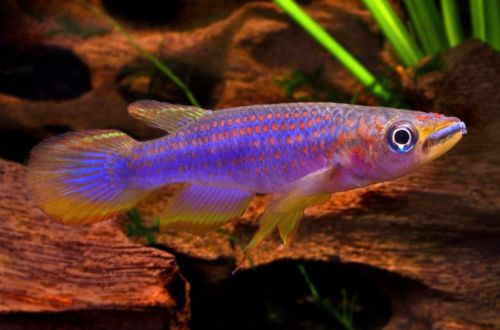
neon eyeball
The neon eyeball, scientific name Poropanchax luxophthalmus (formerly Aplocheilichthys luxophthalmus), belongs to the Poeciliidae family. Easy to keep and breed beautiful schooling fish. May be recommended for beginner aquarists.

Contents
Habitat
The fish is native to tropical and equatorial Africa. The natural range extends to the coastal plains of southern Togo and along the southern regions of Benin, Nigeria and Cameroon. Inhabits shallow streams and rivers flowing in a dense network through shrouds, as well as temporary reservoirs formed after the rainy season. In the dry season, the reservoirs become smaller, and the water warms up above 30 degrees.
Brief information:
- The volume of the aquarium – from 40 liters.
- Temperature – 24-30°C
- Value pH — 6.0–8.0
- Water hardness – soft to medium hard (3-15 dGH)
- Substrate type – any dark
- Lighting – subdued
- Brackish water – no
- Water movement – moderate
- The size of the fish is about 3 cm.
- Food – any food
- Temperament – peaceful schooling fish
Description
Adults reach a length of no more than 3 cm. The fish has a silver color with two bright blue lines. Fins and tail are translucent with a yellowish edge. Males differ from females in having a pointed anal fin. A characteristic feature is the presence of a light pigment in the upper part of the iris, for which the fish got its name – “eye-eye”.
Food
The daily diet may consist of dry, freeze-dried flakes, granules of a suitable size. Live foods will be a good addition: daphnia, brine shrimp and other invertebrates.
Maintenance and care, arrangement of the aquarium
The optimal size of the aquarium for a flock of 10 fish starts from 40-50 liters. The design should provide places for shelters, for example, in the form of thickets of plants, snags and other natural or artificial decorative elements.
It is noted that the fish show their best color in dimly lit aquariums. Using floating plants such as Salvinia or Pistia will not only provide additional shade, but will also prevent accidental jumping. The neon lampeye is an excellent jumper. In nature, it uses this ability to escape predators or move to a nearby body of water during seasonal floods.
Although the fish is able to adapt to a fairly wide range of conditions, sharp fluctuations in temperature and hydrochemical values uXNUMXbuXNUMXbare not allowed.
Behavior and Compatibility
It is recommended to maintain in a flock of 10 individuals. Single fish quickly die. Compatible with other peaceful species of comparable size. The closely related Blue-Eyed Normans will make excellent neighbors.
Breeding / breeding
They give birth regularly. A favorable breeding environment is considered to be slightly acidic water at a temperature of about 25 ° C and a diet rich in protein. Fish spawn among thickets of small-leaved plants. The incubation period lasts 10-14 days. Fry should be transferred to a separate tank to avoid predation by adult fish.
Fish diseases
Hardy and unpretentious fish. Diseases manifest themselves only with a significant deterioration in the conditions of detention. In a balanced ecosystem, health problems usually do not occur. For more information on symptoms and treatments, see the Aquarium Fish Diseases section.





